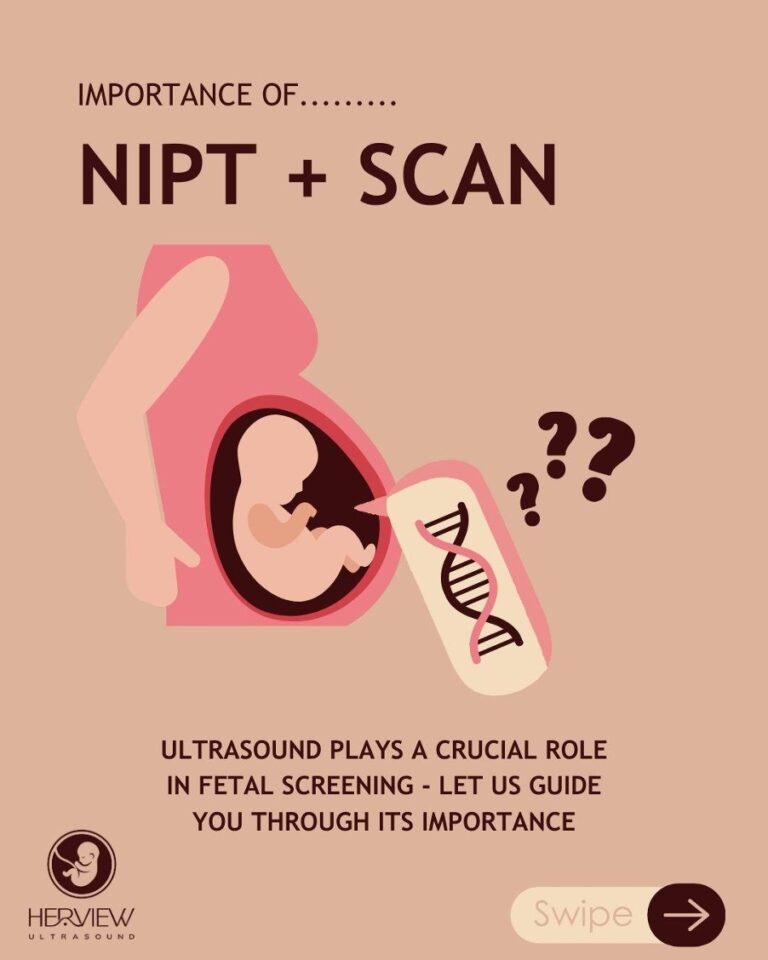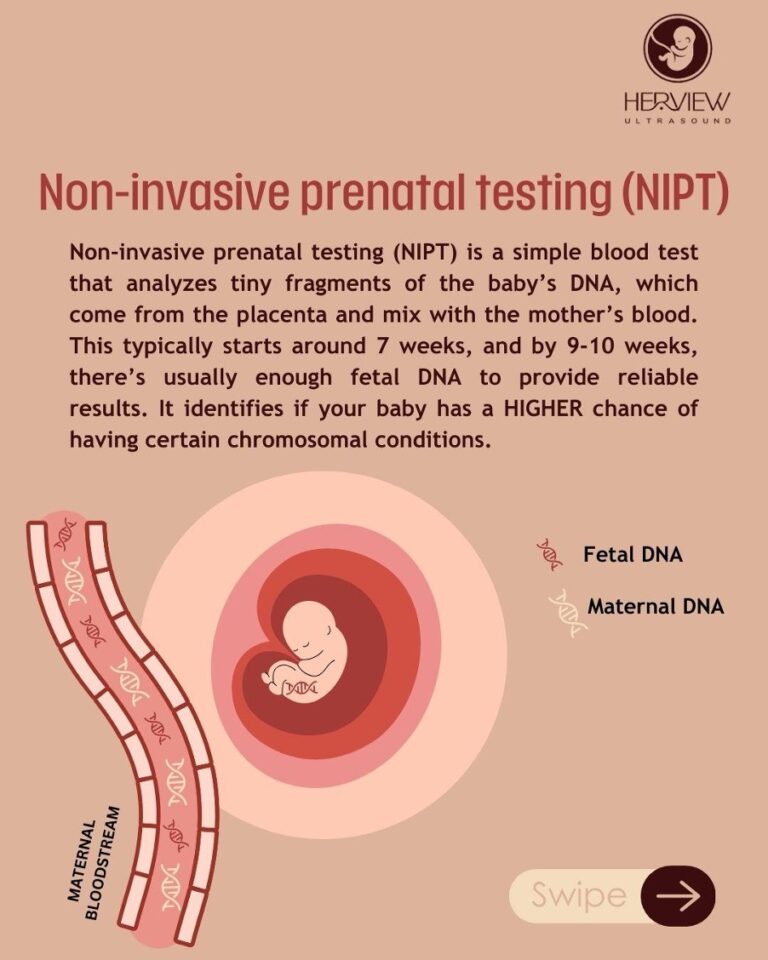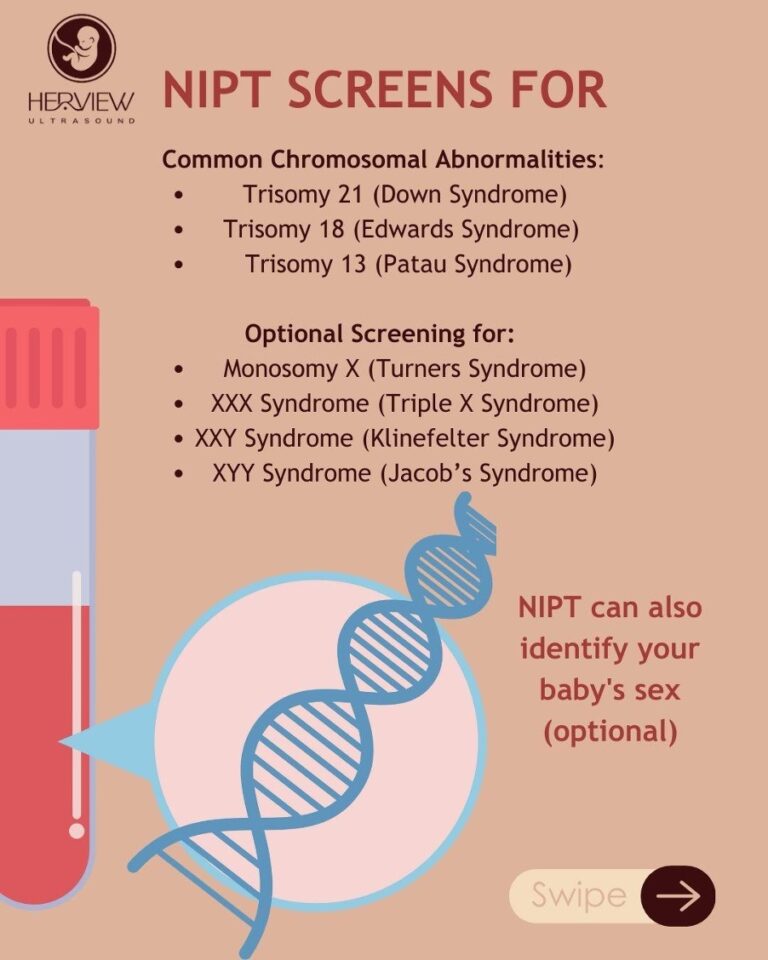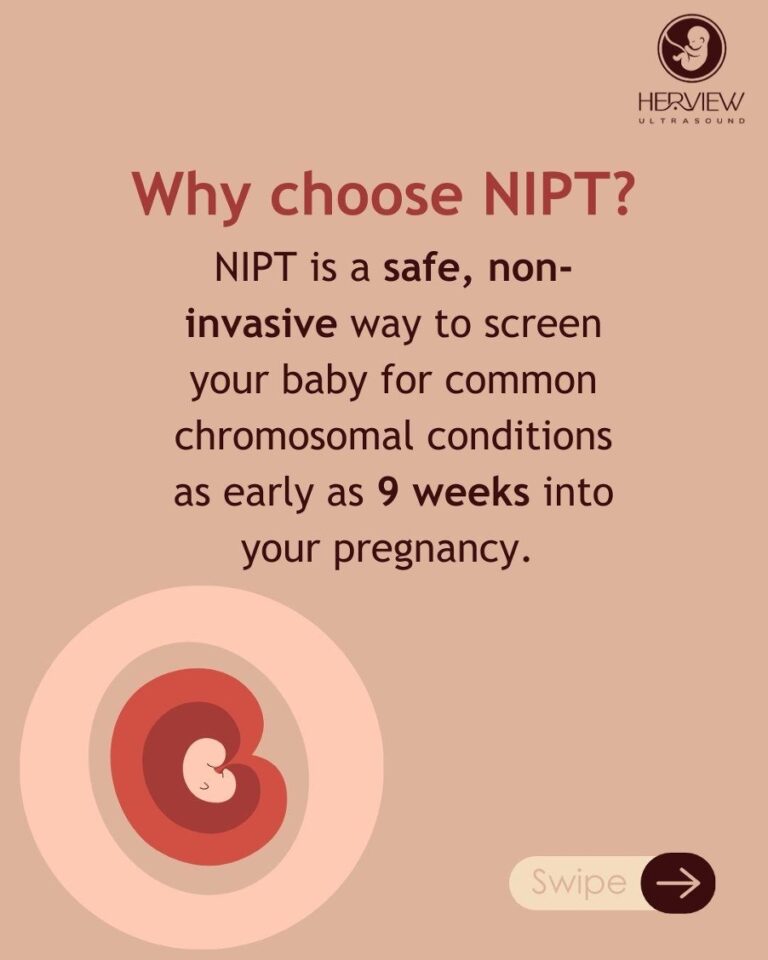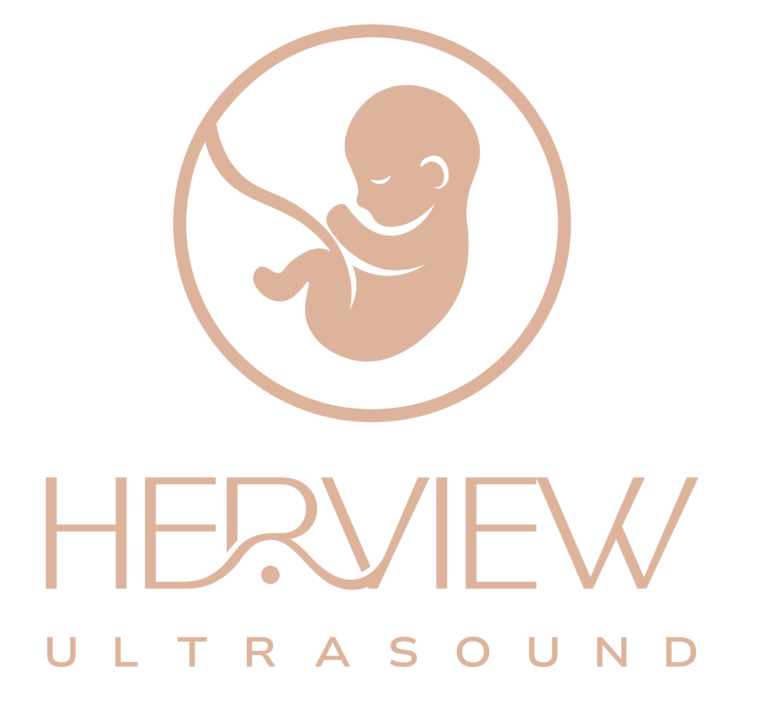Non-Invasive Prenatal Testing (NIPT)
Non-Invasive Prenatal Testing (NIPT) is a screening method used during pregnancy to detect certain chromosomal conditions, such as Down syndrome (Trisomy 21), Edwards syndrome (Trisomy 18), and Patau syndrome (Trisomy 13).
It is a safe, non-invasive procedure that analyses cell-free DNA from the mother’s blood to identify potential abnormalities in the fetus. Non-Invasive Prenatal Testing (NIPT) is important because it provides a safe and effective way to screen for certain chromosomal conditions during pregnancy.
Book a Non-Invasive Prenatal Test at HerView Ultrasound today.
Price: €500 (includes testing + scan)
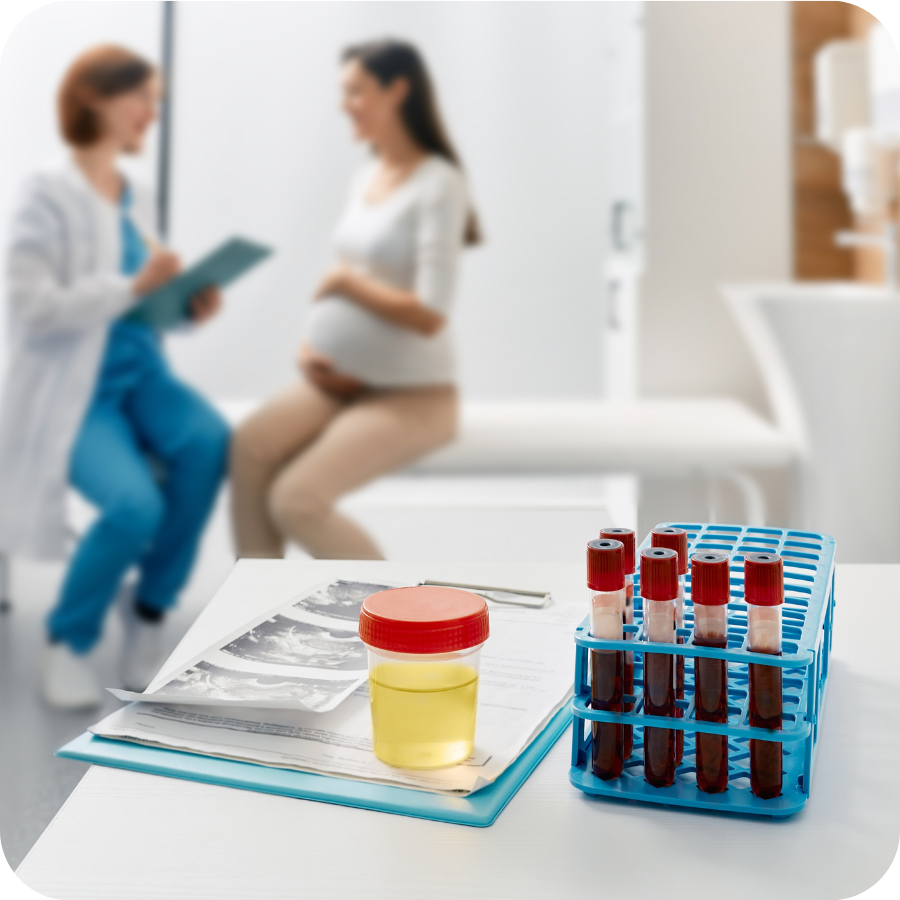
HerView Ultrasound offers two leading NIPT tests, including:
What types of NIPTS Tests are Available?
-
The Panorama Test Provides a more comprehensive screening, including Trisomy 21, 18, 13, Triploidy, Monosomy X, 22q11.2 deletion syndrome, and four additional microdeletions. Testing is available from 9 weeks gestation.
-
The PerinatalSeq Test Screens for Trisomy 21, 18, and 13, as well as other chromosomal disorders. It also offers optional fetal sex determination. Testing is available from 10 weeks gestation.
HerView NIPT Guide
Panorama vs PerinatalSeq
| Panorama | PerinatalSeq | |
|---|---|---|
| Tests For | Trisomy 21, 18, 13, Sex Chromosome Conditions, Triploidy, Optional Microdeletions |
Trisomy 21, 18, 13, Optional Sex Chromosome Conditions |
| Available From | 9+ Weeks | 10+ Weeks |
| Turnaround Time | 7–10 Working Days | 3–5 Working Days* |
| Works for Donor Eggs / Surrogacy | Yes | Yes |
| Detects Triploidy | Yes | No |
| Detects Microdeletions | Yes (Optional Panel) | No |
| Accuracy | >99% accuracy for common trisomies | >99% accuracy for common trisomies |
*Working Days – From Receipt at Lab
Non-Invasive Prenatal Testing FAQ's
1. Can NIPT determine the sex of my baby?
2. Is NIPT suitable for high-risk pregnancies?
3. How does HerView collaborate with HTS Labs for Non-Invasive Prenatal Testing?
4. Why choose Panorama?
5. What does a low risk result mean?
6. What if I receive a high risk result?
7. Are there other types of results?
8. Who can have the test?
The VeriSeq NIPT Solution v2 is not validated for use in pregnancies with more than two foetuses, foetal demise, mosaicism, partial chromosome aneuploidy, triploidy, translocations, maternal aneuploidy, transplant or malignancy. VeriSeq NIPT Solution v2 does not detect neural tube defects. Certain rare biological conditions may also affect the accuracy of the test. For twin pregnancies, HIGH PROBABILITY test results apply to at least one foetus; male test results apply to one or both foetuses; female test results apply to both foetuses. Due to the limitations of the test, inaccurate results are possible. A LOW PROBABILITY result does not guarantee that a fetus is unaffected by a chromosomal or genetic condition. Some non-aneuploid foetuses may have HIGH PROBABILITY results. In cases of HIGH PROBABILITY results and/or other clinical indications of a chromosomal condition, confirmatory testing is necessary for diagnosis.
Results will be ready in approximately 3–5 working days. Women still can have their 12-week scan for a detailed examination of the foetal anatomy, including measurement of nuchal translucency, nasal bone and other important factors. In this visit, patients can discuss the DNA and ultrasound results with their obstetricians. On the basis of the NIPT result and the ultrasound findings, a patient can decide whether or not she wants to have an invasive procedure (for example, CVS or amniocentesis).

